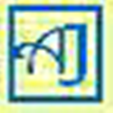Electrostatics
India Study Solution MCQ Test Series with Hints and Solutions
JEE,
NEET, MCAT (Medical College Admission Test)
Hi Guys,
Welcome back to your own site India Study Solution
@www.indiastudysolution.com
Here
is your next Test Series a set of 10 most important solved questions (Q. No. 31-40)
for NEET, MCAT and JEE from Electrostatics in Physics with their hints &
solutions.
Click
to check NEET and JEE Main Syllabus for chapterElectrostatics.
Friends
if you have not subscribed us yet then you are missing many important things.
Plz do subscribe India Study
Solution (free, Subscribe button given in the sidebar) before you forget so
that you get information through mail in your inbox whenever we publish
anything of your interest.
You are also
welcome to follow / share us on Face Book,
Twitter.
Alternatively, you can Bookmark this site for timely updates on India
Study Solutions, JEE and NEET syllabus, Notification (NTA circular etc.) posted
in our EduNews
section.
So, friends without wasting further
time let us start -
Electrostatics
Set 4 (Q. No 31-40)
Question
31: Consider
the situation of figure (29-Q3). The work done in taking a point charge from P
to A is WA, from P to B is WB and from P to C is WC.

b. WA>
WB> WC
c. WA
= WB = WC
d. None of
these
Question
32: When a
glass rod is rubbed with silk, it:
a. gains
electrons from silk
b. gives
electrons to silk
c. gains
protons from silk
d. gives
protons to silk
Question
33: Two
point charges of same magnitude and opposite sign are fixed at points A and B.
A third small point charge is to be balanced at point P by the electrostatic
force due to these two charges. The point P -

b. is at the mid-point
of line AB
c. lies to
the left of A
d. none of
these
Question 34: In a certain region of
space where electric potential is constant, the magnitude of electric field is
a. Also
constant
b. Positive
c. Negative
d. Zero
Question
35: Relative
permittivity of mica is:
a. one
b. less than
one
c. more than
one
d. infinite
Question
36: Potential
due to a charged conducting shell varies as inversely proportional to the
distance from its centre at
a. Inside the
sphere
b. Outside
the sphere
c. Only
outside the sphere
d. Does not
vary like mentioned
Question
37: The
electric field above a uniformly charged non conducting sheet is E. If the
non-conducting sheet is now replaced by a conducting sheet, with the charge
same as before, the new electric field at the same point is:
a. 2E
b. E
c. E/2
d. None of
these
Question
38: The
wrong statement about electric lines of force is
a. These
originate from positive charge and end on negative charge
b. They do
not intersect each other at a point
c. They have
the same form for a point charge and a sphere
d. They have
a physical existence
Question
39: A
negative charge is placed at some point on the line joining the two +Q charges
at rest. The direction of motion of negative charge will depend upon the:
a. position
of negative charge alone
b. magnitude
of negative charge alone
c. both on
the magnitude and position of negative charge
d. magnitude
of positive charge
Question
40: If we
move in direction opposite to the electric lines of force:
a. electrical
potential decreases
b. electrical
potential increases
c. electrical
potential remains uncharged
d.
nothing can be said
electrostatics
Hints and Solutions of
Physics Electrostatics MCQ Test Series – Set 4 (Q. No.31–40)
https://www.indiastudysolution.com
Answer 31: c.
Answer 32: b (Hint: When we rub glass
rod with silk, excess electrons are transferred from glass to silk. So, glass rod
becomes positive and silk becomes negative).
Answer 33: d (Hint: There is no point
near electric dipole having E = 0).
Answer 34: d. Answer 35: c. Answer
36: c.
Answer 37: b










0 on: "NEET, JEE, MCAT Preparation | Solved Questions Bank, Test Series, Notes on Electrostatics, Physics chapters "